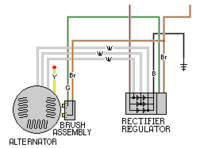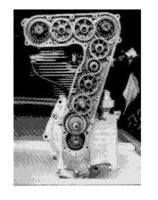Hello XS650,
(I posted this in the tech thread "some wiring diagrams" but I'm not sure that get much traffic so I thought I would start a thread)
Would anybody care to take a look and critique my wiring diagram?
1982 Heritage Special
stock TCI
stock alternator
kickstart only
My first attempt at this so I apoligise if its confusing. I just tried to eliminate criss-cross wires, they make my head spin. Didn't really put too much thought into wire colors yet.
All lighting, aside from the headlight, will be LED. Also, I just realized my indicator light need ground. I will add those in the next draft.
Thanks!


(I posted this in the tech thread "some wiring diagrams" but I'm not sure that get much traffic so I thought I would start a thread)
Would anybody care to take a look and critique my wiring diagram?
1982 Heritage Special
stock TCI
stock alternator
kickstart only
My first attempt at this so I apoligise if its confusing. I just tried to eliminate criss-cross wires, they make my head spin. Didn't really put too much thought into wire colors yet.
All lighting, aside from the headlight, will be LED. Also, I just realized my indicator light need ground. I will add those in the next draft.
Thanks!





 represents more of a idea, "not intended to be factual statement", if politicians can get away with it so can I
represents more of a idea, "not intended to be factual statement", if politicians can get away with it so can I 
